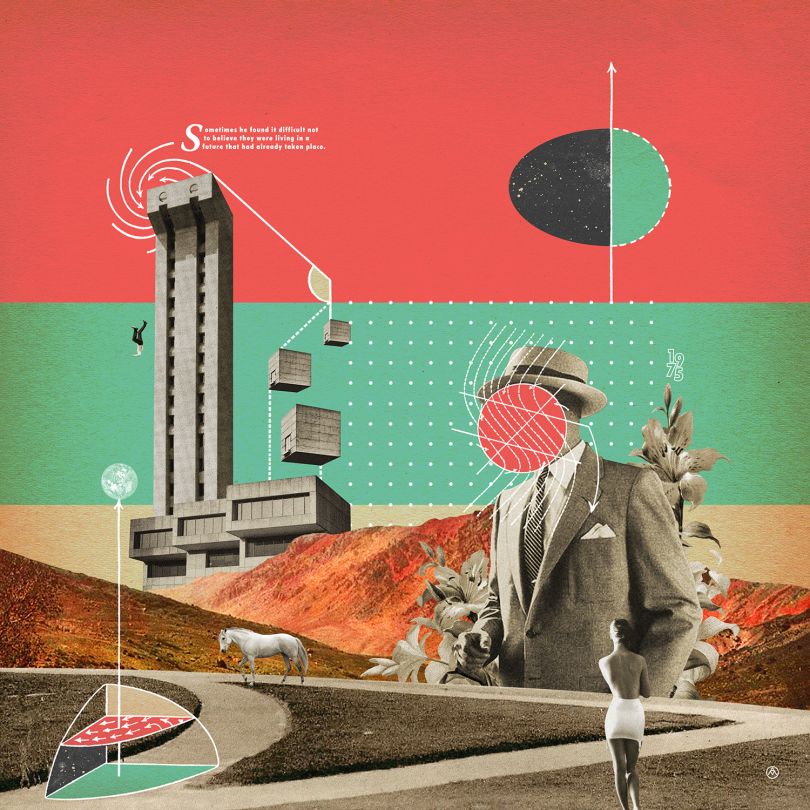
Leo Frobenius conceptualized cultural diffusion in 1897 in his publication Der westafrikanische Kulturkreis. He defined cultural diffusion as the transfer or exchange of cultural items between cultures. Since then, the term has evolved into a widely used phrase for the transfer of cultural items from one country to another. Cultural diffusion has become a major concern in global affairs. Find out how to encourage cultural diffusion within your community and elsewhere. These are some ways to encourage cultural diffusion.
Inter-cultural diffusion
We are all exposed to a range of cultures through travel and contact, but cultural diffusion stretches beyond the boundaries of specific regions. When two different cultures come together, they are often "intwined," which broadens the scope of a person's horizons and makes them more cosmopolitan. One example is that a Manhattan woman might purchase mala beads for Buddhist monks. This is a unique tradition that enriches the depth of her meditation practice. She wouldn't have the opportunity to attend a Brooklyn sushi night, an old Manhattan tradition.

Contagious diffusion
Contagious refers to the phenomenon where a trend quickly spreads across the globe. This type is best when the idea spreads by direct contact between people. This is the fastest and most popular way to spread an idea. The Latin word contagious, which literally means touch, is the word that gave rise to the term "contagious".
Stimulus diffusion
Cultural diffusion happens when a trend, idea, or concept is introduced to another culture or context. A cultural trait that is introduced to another culture changes how it is used. However, stimulus diffusion is different than cultural translation, where a new idea or trait can only spread within one culture. Instead, an idea can spread throughout many cultures, including multiple locales. Here are some examples.
Relocation diffusion
The spread of ideas and innovations is possible through both expansion and relocation diffusion. When people move from one place to the next, they often bring with them their culture and traditions. Migration has been the main cause of cultural diffusion throughout history, resulting in the growth of cultures from many different places. As in mass immigration, migration can also be forced. Mass immigration has led the development of new cultures, including those from different ethnic groups like the African and Caribbean peoples.
Barrier effects
Cultural items cannot spread indefinitely. They will spread from their origins but may face barriers. Barriers can be both physical and social. Deserts, mountains, dense forests, and other physical barriers are all examples of these types of barriers. The Amazon rain forest served as a physical barrier over centuries and was an example of this. Language and religion are two of the social barriers. Cultural diffusion is not a perfect science, but it is possible to understand some of the barriers and how they can impact the spread of culture.

Indirect diffusion
Direct and indirect cultural diffusion can occur simultaneously. Direct diffusion is when two cultures mix or fall inlove. When you visit a friend's place, for example, you are likely exposed to their culture. Indirect diffusion occurs when you are forced to adopt certain cultural characteristics. This happened in Barcelona, Spain in the 20th Century. It is not unusual for people adopting aspects of another culture, even if they don't realize it. But the difference is profound.
FAQ
What examples of pop culture are there in 2020?
The music business is changing rapidly. In fact, this year we saw Billie Eilish (Post Malone) and Travis Scott reach number 1 in Billboard's Hot 100 chart. This was an extraordinary feat for any artist.
The same goes for streaming services. Spotify reported that Spotify streamed more 10 billion hours audio content last year. This is 5x the amount of audio content Spotify users listen to today, compared to just five year ago.
This has resulted a huge shift in the ways people consume media. These days, people spend more time consuming content than creating it.
Everyone, from toddlers to seniors, has an access point to high-quality audio content. This means anyone can record, edit or mix their music and then release it.
You don't have to go to school to learn classical instrumentation in order to play your favorite songs. It's easy to download an app and add your voice. Then upload the videos to YouTube.
Don't worry if your not interested in making music. You can always watch other people do it. There are many channels where you can watch videos of songs.
What are examples of pop culture today?
Pop Culture is the 21st century's art form. Pop Culture includes all forms of popular entertainment such as music, film, TV and video games, fashion, advertising and comics. Neil Postman, an author, coined the term "pop" in his 1985 book Amusing Ourselves. Pop was a method of mass communication using cheap tricks and formulaic techniques to create an illusion that spontaneity and uniqueness.
He noted, however, that many people do not feel true enjoyment due to their conditioned desire to find media experiences that make others feel superior. He also suggested that this form of cultural expression had led to the loss in critical thinking skills among young adults.
Pop culture is sometimes also called popular culture, consumerism, or pop culture.
What are some examples of pop culture 2021?
Two hijacked airplanes from terrorists crashed into New York City's twin towers on the 11th September 2001. This day would be called 9/11.
The events of this day have impacted popular culture and continue to do so today. We can see many ways the event has influenced lives.
This includes television shows such as 24 and movies such as United 93, which tells the story of what happened during the flight from Boston to Los Angeles on 9/11. You can also find books such as The Forever War, by Dexter Filkins.
We all remember where we were when we first heard about the attacks. Some people got out of bed and went outside; others watched the TV or read newspapers.
Pop culture is something that changes every year. It is an expression of society and a source of inspiration. What will happen to popular culture in the next year? We can't tell yet. We know that it will be different from what it was before.
How can pop culture be avoided?
We need to recognize when pop culture influences us. Then, we need to ensure that we are not being influenced. Here are some ways you can avoid being influenced by bad influences
-
Avoid watching violent TV shows like Game Of Thrones.
-
Spend no time surfing the Internet. Read books instead.
-
Spend less time watching television. Spend your time doing something healthy.
-
Take care of what you post online. Once comments are posted, you cannot delete them.
-
Verify that the websites you visit contain security measures. Before you provide personal information, be sure to check them.
-
Do not be compelled to do anything that could endanger your safety.
Talk to someone if pop culture is a problem. Call your local library (1-800-883-THE-LOST) or the National Center for Missing & Exploited children (1-800-THE-883-LOOK).
What is the popular music culture?
Popular Music Culture is a constantly-changing phenomenon that comes in many forms.
Popular music culture can be defined by its use certain types of music (e.g. rock, jazz) or lyrics. It also encompasses the influence of visual media, such as film, television, fashion, advertising, etc., on artists' careers and public perception.
It's also how fans interact and support their favorite artists.
One aspect of popular music culture is the rise of "superstars," artists who have achieved fame, fortune, and status for themselves.
These icons transcend many genres and have become cultural icons. Their popularity has also influenced the development of popular music.
Some other elements of popular music culture are:
* The rise recording technology – from acoustic instruments up to electric guitarists and microphones.
* The invention of record players and radios;
* The birth and rise of rock & roll.
* The introduction of TV and film;
* The introduction of MTV and VH1
* The creation of internet.
How did pop culture develop?
Technology was the driver behind the growth of popular culture. It developed as people became more mobile. The invention of the radio enabled mass communication. This made it possible to create television, which was then used to develop the internet.
Computers became popular at home when people were introduced to computer games. These games were first played on consoles such as the Nintendo Wii or Sony Playstation 3. They are now becoming available for free online. Many people choose to play videogames instead of watching television.
Video games are extremely popular with teenagers and kids. You can play alone or with other people via the internet. Call Of Duty or Grand Theft Auto can be very violent. These games can cause serious harm to children, so parents should be concerned about their children. Some people find it thrilling to see what happens when a character is killed.
Another way pop culture influences youth is through music videos. They are a great way to learn about celebrity news and the latest trends. Young people enjoy watching them. It's obvious that music is a major part of our lives.
Music videos are often made by artists who add special effects to their songs. To make their appearance more attractive, rappers may wear makeup or wigs. Others put themselves through extreme physical demands to show off their bodies. Many singers are able to sing while wearing costumes.
Today there is so much music to choose from. You can listen any music you wish. But this isn't always good news. Music can sometimes encourage violence. People are often angry when they hear certain songs or words. Sometimes they even commit crime.
This happened recently with rapper 50 Cent. He sang Get Rich Or Die Trying. It contains the line "I'm gonna shoot a momfucker down / Although I don't understand why but I might." People thought this meant that he would commit suicide. A man threatened to kill him, and called him. 50 Cent changed the lyrics. Now, it says "I'll shot a bitch down/I don't know how but I might."
Popular culture is essential. We must understand its effects on us. If we don’t know how it affects our lives, we won’t have the ability to protect ourselves from its negative consequences.
What are some of the positive aspects of pop music?
Pop culture has some positive aspects. For instance, it gives people something to talk about. It allows people to express creativity. Artists can use pop culture to help promote their work.
Pop culture has the greatest quality, in my opinion. It brings people together. Everyone wants to see the same shows. Everyone likes the same music. Everyone enjoys the same films. Pop culture allows us to connect.
Pop culture can be unhealthy. Some movies glorify violence. Some television shows make fun people with mental disabilities. Some bands even encourage their fans to use drugs.
So what should we do with the negative aspects of pop culture?
We should avoid negative aspects of pop culture. It shouldn't influence us. It can cause problems for our health. It can lead you to crime. It can even cause problems in our relationships.
Pop culture should be considered as a way to help or hinder society. Is it promoting good values? Are people being indoctrinated to do terrible things?
Finally, let us ask ourselves whether or not we are happy in the world that we live. Do we like the music we listen to? The TV programs we watch What clothes are we wearing?
If we are concerned about our future, it is essential that we take responsibility and be accountable for our actions. It is up to us to choose the kind of world that we want. Then we can choose the right type of pop culture.
Statistics
- For example, the term hater meaning someone who strongly undermines or criticizes others, often due to pathetic jealousy, likely emerged from hip hop culture, such as the term playa hateras, used by influential rapper Biggie Smalls as early as 1995. (simplicable.com)
- [17][18][19]Definition[edit]According to author John Storey, there are various definitions of popular culture. (en.wikipedia.org)
- Latinos represent roughly 19% of the U.S. population. (npr.org)
- In 1987, US films captured 56% of the European film market. (socialsci.libretexts.org)
- According to Dictionary.com, popular culture, or low culture as it is sometimes referred to is comprised of the “cultural activities or commercial products reflecting, suited to, or aimed at the tastes of the general masses of people” (7/21/19). (socialsci.libretexts.org)
External Links
How To
What is popular culture?
Popular culture is all around us. It's all around us: movies, books, music and television, as well as video games and social networking sites.
Popular culture influences our lives. The things we read in magazines and listen to on the radio influence our daily routines. We watch television, go shopping with friends, enjoy parties, get to know people online, surf the Internet, and play video games.
Popularity doesn't necessarily mean it's good business.
This is where media technologies come in. They provide tools that allow us to access popular culture in a way that helps us connect with consumers.
The media technologies can be used for:
-
Content about products and/or services
-
Engage with fans by introducing them to their favorite authors, actors, or musicians
-
Promote brands and businesses
-
Send advertising
-
Track consumer trends
So if you're looking to build brand awareness, attract more customers, generate leads, increase sales, or boost customer loyalty, you need to get familiar with popular culture. You can do that by using media technologies.